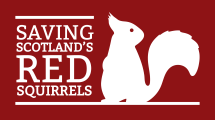…to help us improve. Our policy is: To provide a fair complaints procedure that is clear and easy to use for anyone wishing to make a complaint. To publicise the existence of our complaints procedure so that people know how to contact us to make a complaint. To make sure everyone in our organisation knows what to do if a… […]
Read More…
…pine forests of the Highlands. Under threat Red squirrel populations have seriously declined, with only an estimated 220,000 remaining in Scotland today. In some places they have not been seen for many years. The greatest threat to the red squirrel’s future in Scotland is the invasive non-native grey squirrel. Larger and more robust, grey squirrels out-compete red squirrels for… […]
Read More…
…can move and adapt. 30 by 30 – the plan to increase the area of land that is protected or managed for nature to 30% by 2030. Nature Targets – the plan to set legal targets for nature that the government has to meet. National Parks – the plan to designate at least one new National Park in Scotland by… […]
Read More…
…will the Red Squirrel Forum for South Scotland be able to offer independent groups? The Red Squirrel Forum for South Scotland acts as an umbrella organisation for volunteers in all 17 independent groups in the south of Scotland. Their role is primarily to assist with cross collaboration between the groups, and put groups in touch with one another to share… […]
Read More…
…on the Hub, and through the Forum via the ‘Offers and Needs’ chart. Will SSRS equipment and merchandise be given to volunteer networks? Any additional SSRS equipment and merchandise has been given to the Red Squirrel Forum for South Scotland to distribute amongst the independent volunteer networks. For more details and to arrange use please contact the Forum. What will… […]
Read More…
Charity Trees for Life has been working since 1993 to restore previously lost native habitats and species to the Scottish Highlands. Since 2016 their Red Squirrel Reintroduction Project has worked to help red squirrels repopulate areas where they had previously gone extinct, translocating more than 200 red squirrels to 10 new areas in the northwest Highlands, creating thriving new populations…. […]
Read More…
…with only around 287,000 remaining, about 80% of which are estimated to be in Scotland. The greatest threat to the red squirrel’s future in Scotland is the invasive non-native grey squirrel. First introduced in Victorian times, the larger and more robust grey squirrel out-competes reds for food and living space, making it difficult for them to successfully breed and for… […]
Read More…
…time for red squirrel conservation. Nicole Still: Programme Manager Nicole joined the SSRS team in June 2022 as the new Programme Manager to oversee the team’s operations across Scotland and lead the delivery the Transition Phase’s legacy aims. Originally from the Great Lakes region in the US, Nicole has spent the last decade studying and working in temperate forests… […]
Read More…
…the national strategy for red squirrel conservation in Scotland, based on the findings of the report and success of the SSRS programme to date. Full details of the successes of the project are outlined in the report. Key highlights of the Scottish public’s contributions to red squirrel conservation include: By the end of the DCA phase 18 volunteer led groups… […]
Read More…
…serve as refuges for red squirrels if their decline were allowed to continue. These predominantly Sitka spruce forests are not ideal habitat for red squirrels, but their very paucity can more or less exclude greys . They are also poor habitat for a range of other wildlife, so the strongholds need to be kept to restricted areas as far from… […]
Read More…
